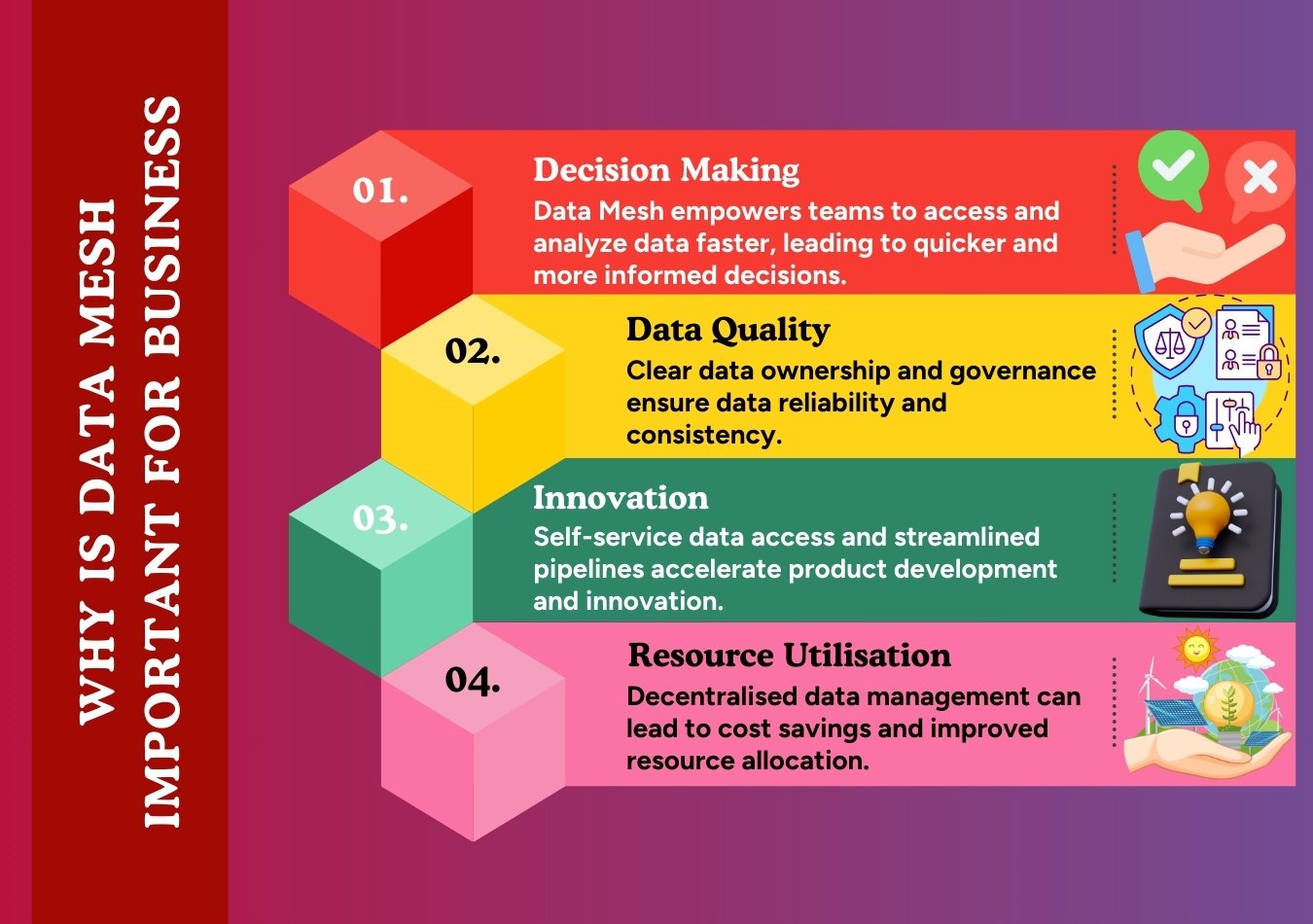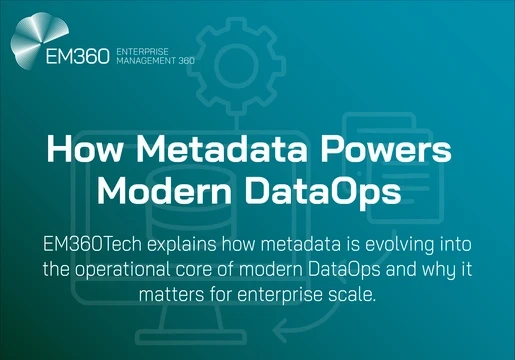In recent years, organisations have constantly been adapting and changing. Rapidly advancing technologies have led to an information overload, resulting in an ever-increasing volume of data.
However, one such solution can help organisations manage and process their data more effectively. Enterprises can deploy data mesh to make their business run more efficiently.
According to Markets and Markets, the global data mesh market was valued at $1.2 billion in 2023 and is expected to grow to $2.5 billion by 2028.
This article will tell you everything you need to know about data mesh, its definition, and how it can help you make better business decisions.

What is Data Mesh?
Data mesh can be defined as a framework that structures data according to business domains helping organisations manage their small to large-scale data base efficiently. It essentially treats data like a product and allocates the ownership and responsibility of the data product across an organisation.
This not only empowers an organisation to make better-informed business decisions but also helps different teams orchestrate data tasks in synchronisation.
According to IBM, a data mesh is a decentralized data architecture that organizes data by a specific business domain—for example, marketing, sales, customer service and more—to provide more ownership to the producers of a given data set.
Data mesh encourages self-service for data access and promotes data as a product, with clear ownership, documentation, and governance. This approach breaks down data silos, improves data quality and consistency, and enables faster, more informed decision-making across the organisation.
What Is Data Mesh Architecture?
While data mesh manages the data product in a decentralised framework, data mesh architecture refers to the framework itself that manages the data. This framework manages the data that is already owned by the organisation and managed by its teams who use the platform.
Data mesh architecture is typically designed to be a self-serve data platform that also encourages federated computational governance.
According to Amazon Web Services (AWS), a data mesh architecture effectively unites disparate data sources and links them together through centrally managed data sharing and governance guidelines. Business functions can maintain control over how shared data is accessed, who accesses it, and in what formats it's accessed.
Why Data Mesh is Important?
Data mesh is crucial for organisations of all sizes today because of the constantly growing volume of data in the world. Because of the massive data volume already existing, it’s incredibly challenging to filter, organise, analyse and manage the data.
Organisations have to typically hire a team of engineers and scientists such as data scientists and data analysts to manage and analyse the data. With continuously increasing data, the costs to manage and maintain them go up significantly especially using a centralised ‘monolithic’ system.
This is where data mesh comes into play. It challenges the conventional data management approaches. Instead of centralising data ownership and management, it decentralises it by transferring ownership and management from a central data team to individual domain teams. Each domain team becomes responsible for its own data, including ingestion, processing, storage, and governance.
Such a structure paves the way for faster goal fulfilment while still promoting data quality and consistency with an emphasis on complying with business standard requirements and governance within each domain.
Individual teams can find what they need faster because the data available to them is already sorted for the purpose of their roles. This ensures that data is reliable and trustworthy, leading to more accurate insights and better decision-making.
Ultimately, data mesh enables organisations to become more data-driven, agile, and competitive in today's rapidly evolving digital space that’s bombarded with information every second of the day.
How Data Mesh Works?
Data mesh makes data act as the product instead of a by-product in a situation and data producers are the data product owners. So these product owners supply data to an organisation that can use data mesh to categorise and supply the relevant data to domain teams directly.
A centralised infrastructure team ensures that data ownership is maintained across the domains. Each domain team becomes an owner of that specific data set they have been allocated through the data mesh. The responsibilities of the domain team include managing their own data, including ingestion, processing, storage, and governance.
IBM explained that the domain-driven design also makes data producers responsible for documenting semantic definitions, cataloguing metadata and setting policies for permissions and usage, there is still a centralised data governance team to enforce these standards and procedures around the data.
Although domain teams are responsible for their ETL pipelines in a data mesh architecture, a centralised data engineering team remains vital. Their primary responsibility becomes architecting and implementing strong data infrastructure that can efficiently handle the diverse data products generated by various domains.
Key Features
1. Data Ownership
Data mesh enables enterprises to divide their data between each of their domains. The individual organisational domains are owners and responsible for their allocated data. This includes data ingestion, transformation, storage, and security.
Decentralising ownership in such a way aims to help domain teams make justified and informed decisions about their data. Not only does this improve quality and agility but also aligns with the organisational needs.
The data mesh approach fosters a sense of accountability and ownership, leading to better data management practices. Additionally, it makes the domain teams more efficient in optimising their data for specific tasks.
2. Data as a Product
Data mesh treats data as a product where the product is a valuable asset designed to cater for the needs of the consumer. In this case, the consumers are the domain teams.
Data products have well-defined APIs, documentation, and version control, making them easily accessible and consumable by other domains within the organization. This approach promotes data quality, consistency, and reusability, enabling data-driven insights and innovation.
Treating data as a product helps organisations expedite their data-driven decision-making to improve enterprise performance.
3. Self-Service
Data mesh also helps domain teams independently manage and process their data embodying a self-service principle that makes managing data infrastructure seamless.
It provides a platform equipped with tools for data ingestion, transformation, storage, and analysis. This self-service approach eradicates the need for centralised data engineering teams, allowing domain teams to become self-sufficient in their data operations.
By providing domain teams with the necessary tools and infrastructure, data mesh accelerates data product development and improves data quality.
4. Governance
Data mesh bridges the gap between centralised control and decentralised ownership to help organisations keep up with the regulatory requirements. The solution does this by improving data agility, quality, and accessibility while ensuring compliance with data privacy and security standards.
In data mesh, federated computational governance is significant which involves a shared responsibility model. In this case, a central governance framework sets standards and policies, while domain teams have the autonomy to execute these standards within their specific context.
This approach ensures consistency and compliance across an enterprise while enabling flexibility and newer developments at the domain level. This method also promotes a collaborative environment within an organisation.








Comments ( 0 )